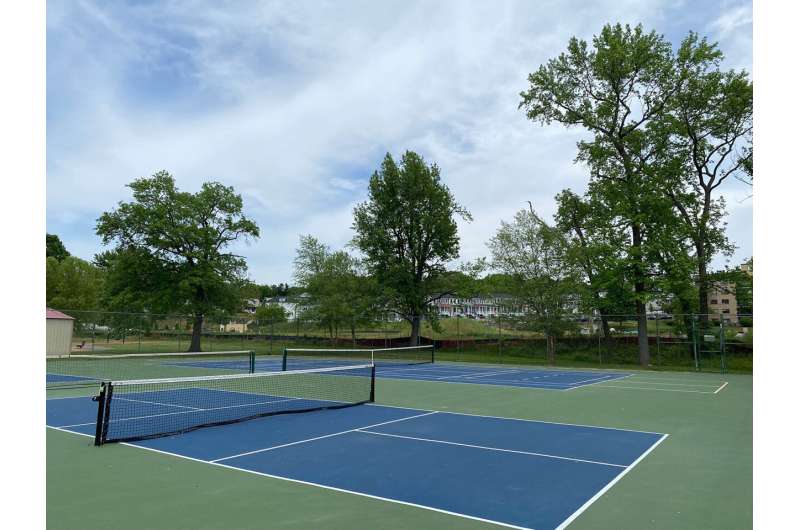Experts recommend HOAs and communities consider the "popping" noise associated with pickleball when deciding to build courts near homes. Credit: AIP
Pickleball Legal Consultant is a job title that likely did not exist a decade ago, but as pickleball courts infiltrate neighborhoods to satiate an appetite for a sport whose namesake is a snack, communities take issue with the resulting influx of noise. Now homeowners' associations and city councils face litigation by those whose lives are disrupted by pickleball's din.
Charles Leahy, an attorney, retired mechanical engineer, and former HOA board member became interested in this issue after his HOA dismissed the recommendations of noise consultants and failed to install noise absorbing barriers. Litigation over noise nuisance ensued and threatens closure of the courts.
Leahy sought to understand how acoustic engineers assess the noise, how they fashion their recommendations, and what best practices engineers can employ to persuade the community that the noise is real and needs to be mitigated. He presents his work May 17 in a session dedicated to pickleball as part of a joint meeting of the Acoustical Society of America and the Canadian Acoustical Association, held May 13–17 at the Shaw Center located in downtown Ottawa, Ontario, Canada.
"Compared to tennis, pickleball is a much smaller court, easier to learn, and especially accessible to seniors," said Leahy.
"Each tennis court can become up to four pickleball courts. Tennis involves a soft and compressible ball and a racket with strings. Pickleball is a hard plastic ball and a hard paddle. Tennis produces a 'thunk' sound versus pickleball 'pop,' which is louder, sharper, more piercing, and more frequent. Thus, more annoying."
Communities looking to invest in—and those facing lawsuits because of—the courts often seek out engineering consultants to advise them. Leahy examined over 70 pickleball consultant noise reports and compared their recommendations with the American National Standard Institute. He found many reports considered only the decibels associated with the noise, but other factors are important too.
"It's not just the loudness, it's the impulsive sharpness and randomness of the 'pops,'" said Leahy. "It's the persistence and repetition of the random noises over many hours a day, usually seven days a week."
His best recommendation is to build courts far from homes, at least 600–800 feet away to allow the sound to naturally dissipate. Less desirable (or more difficult or costly) solutions include enclosing the courts within a building or wall barriers or using less noisy paddles and balls.
"Pickleball has a highly impulsive noise, with each court generating about 900 pop noises per hour," said Leahy. "It's incompatible with residential living. Cities can also locate pickleball in industrial and commercial neighborhoods rather than close to homes.
"The benefits of pickleball to the players are undeniable, and the demand for more pickleball courts is real and genuine. However, there needs to be more research, more planning and prevention, and more effort to avoid ending up in front of the judge and jury."
More information: Technical program: https://eppro02.ativ.me/src/EventPilot/php/express/web/planner.php?id=ASASPRING24
Provided by Acoustical Society of America























